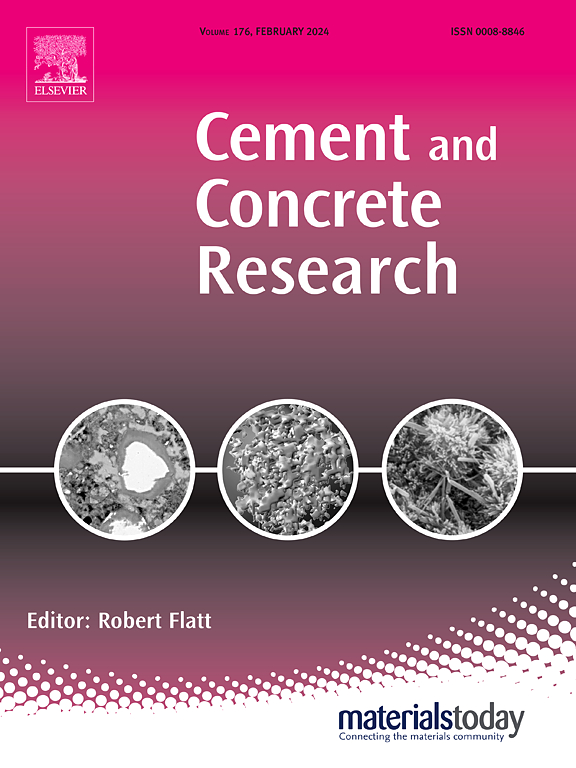量化蒙脱土对水泥浆需水量和聚羧酸盐高效减水剂效率的影响
IF 13.1
1区 工程技术
Q1 CONSTRUCTION & BUILDING TECHNOLOGY
引用次数: 0
摘要
蒙脱土(MMT)作为杂质存在于骨料和石灰石中,降低了聚羧酸酯醚(PCE)高效减水剂在新鲜水泥浆中的增塑效果。尽管进行了大量的研究,以阐明PCE在含MMT的胶凝体系中效率降低的机制,并设计出具有增强MMT耐受性的定制PCE分子,但在含MMT的水泥浆中,PCE行为的定量分析,特别是表面吸附和插层,仍然不明确。在这项工作中,通过量化两种不同侧链长度的pce (P-1000和P-3000)的吸附和插层行为,采用延迟添加方法研究了它们如何影响水泥- mmt膏体的流动性。结果表明,大约1 g MMT需要额外的3 g水才能达到与不加MMT的普通混合物相当的流动性。水泥-MMT膏体中PCE在MMT上的最大吸附量约为35 mg/g,低于插入所需的阈值(~ 40 mg/g)。这表明流动性的降低主要是由MMT的高比表面积驱动的广泛表面吸附引起的,这降低了PCE对水泥颗粒有效分散的可用性。本文章由计算机程序翻译,如有差异,请以英文原文为准。
Quantifying the impact of montmorillonite on water demand and polycarboxylate superplasticizer efficiency in cement pastes
The presence of montmorillonite (MMT) as an impurity in aggregates and limestone diminishes the plasticization efficacy of polycarboxylate ether (PCE) superplasticizers in fresh cement pastes. Despite extensive research efforts to elucidate the mechanisms behind the reduced efficacy of PCE in cementitious systems with MMT and to design tailored PCE molecules with enhanced MMT tolerance, quantitative insights into PCE behavior, specifically surface adsorption and intercalation, within cement pastes containing MMT remain ambiguous. In this work, a delayed addition method was employed to investigate how two PCEs with different side-chain lengths (P-1000 and P-3000) influence the flowability of cement-MMT pastes through quantification of their adsorption and intercalation behavior. The results indicate that approximately 1 g of MMT necessitates an additional 3 g of water to achieve the equivalent fluidity as the plain mixture without MMT. The maximum adsorption of PCE on MMT in cement-MMT pastes was approximately 35 mg/g, below the threshold (∼40 mg/g) required for intercalation. This demonstrates that the reduction in fluidity primarily arises from the extensive surface adsorption driven by the high specific surface area of MMT, which decreases the availability of PCE for effective dispersion of cement particles.
求助全文
通过发布文献求助,成功后即可免费获取论文全文。
去求助
来源期刊

Cement and Concrete Research
工程技术-材料科学:综合
CiteScore
20.90
自引率
12.30%
发文量
318
审稿时长
53 days
期刊介绍:
Cement and Concrete Research is dedicated to publishing top-notch research on the materials science and engineering of cement, cement composites, mortars, concrete, and related materials incorporating cement or other mineral binders. The journal prioritizes reporting significant findings in research on the properties and performance of cementitious materials. It also covers novel experimental techniques, the latest analytical and modeling methods, examination and diagnosis of actual cement and concrete structures, and the exploration of potential improvements in materials.
 求助内容:
求助内容: 应助结果提醒方式:
应助结果提醒方式:


